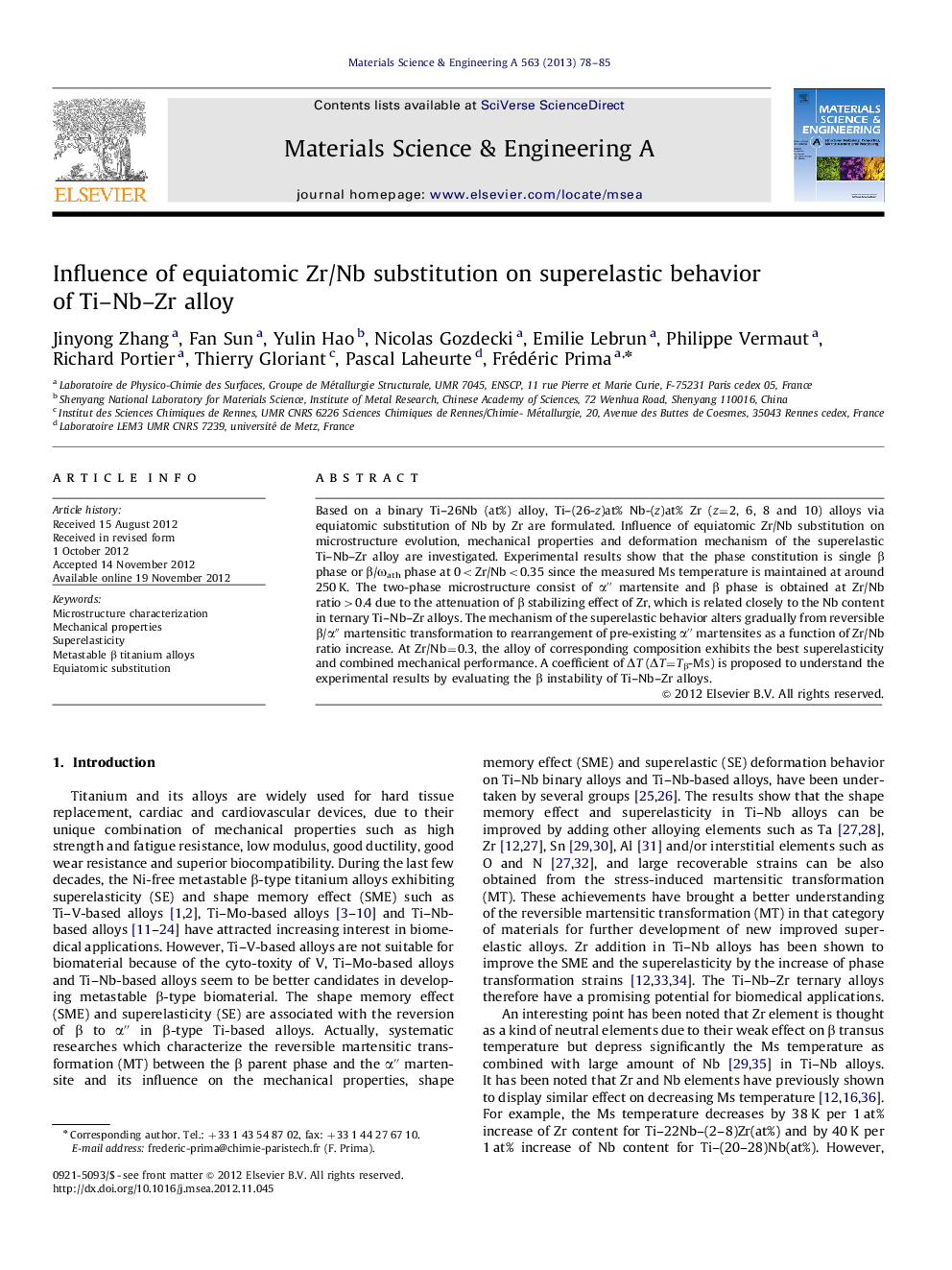| Article ID | Journal | Published Year | Pages | File Type |
|---|---|---|---|---|
| 1576429 | Materials Science and Engineering: A | 2013 | 8 Pages |
Based on a binary Ti–26Nb (at%) alloy, Ti–(26-z)at% Nb-(z)at% Zr (z=2, 6, 8 and 10) alloys via equiatomic substitution of Nb by Zr are formulated. Influence of equiatomic Zr/Nb substitution on microstructure evolution, mechanical properties and deformation mechanism of the superelastic Ti–Nb–Zr alloy are investigated. Experimental results show that the phase constitution is single β phase or β/ωath phase at 0
